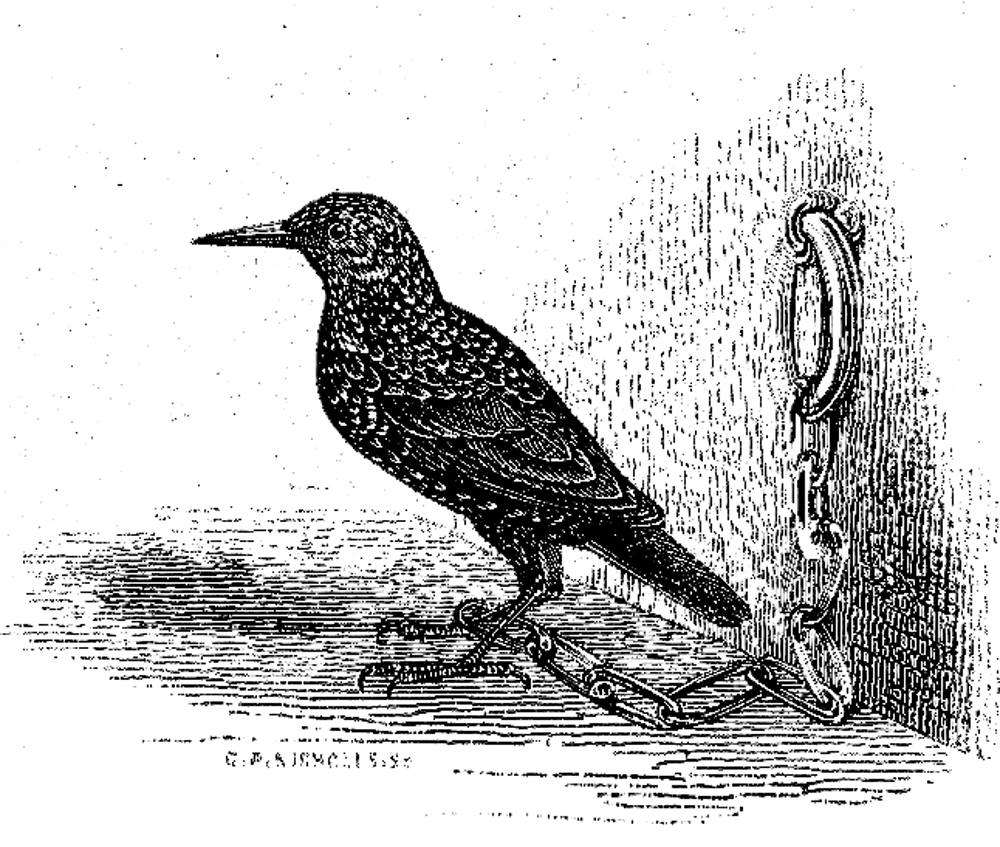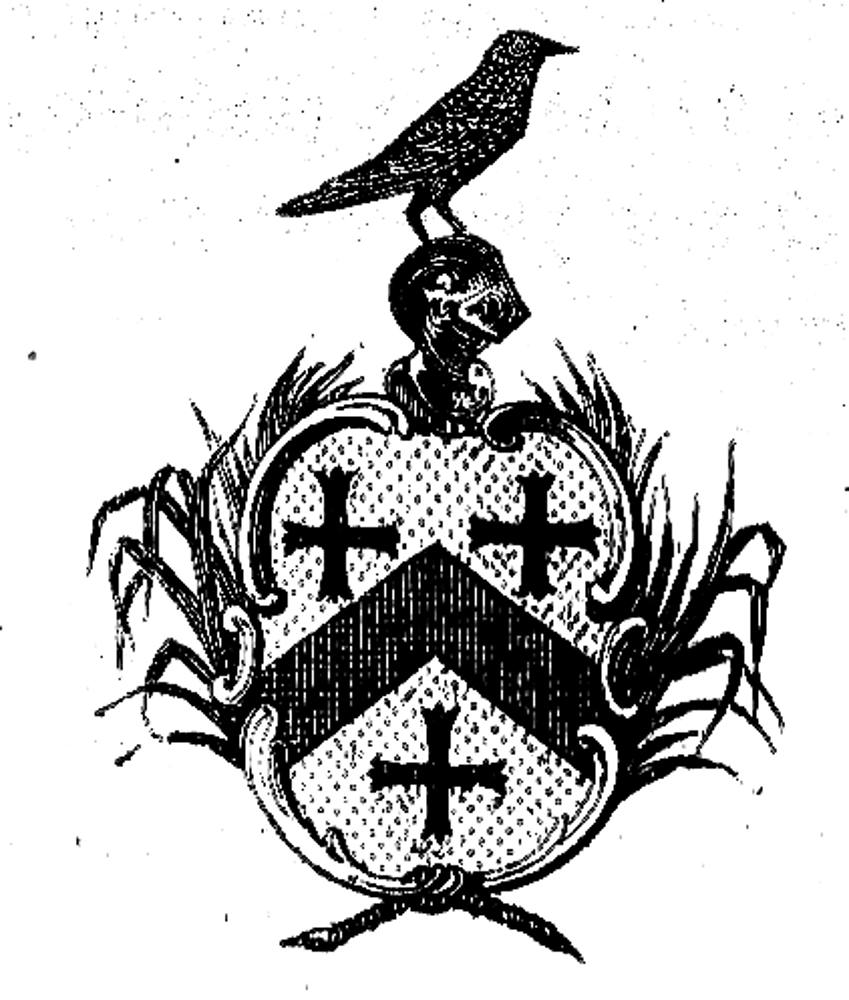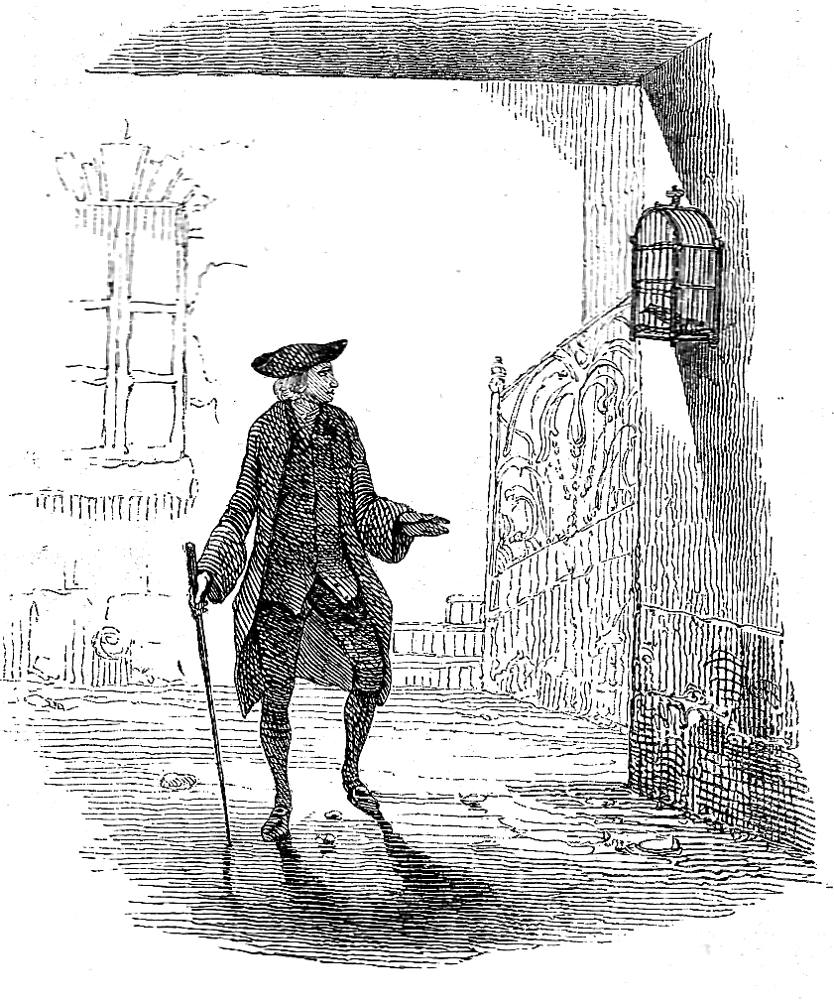

The Starling in the Cage — The Starling on the Sterne family crest, thumbnail illustrations for "The Starling. The Road to Versailles" in Laurence Sterne's A Sentimental Journey through France and Italy, 1841 edition, published by Joseph Thomas, London. Wood-engravings, 4,2 cm high and 5.4 cm wide, p. 106, and 4 cm high by 3.3 cm wide, vignetted, p. 107. The pair of illustrations complete the scene in which Sterne's sentimental protagonist, coming across a caged starling in a Paris passageway, feels compelled to give the bird its freedom. This momentary impulse, in turn, leads Yorick to reflect on the evils of slavery, an institution deeply ingrained in the eighteenth-century European economy owing to the need for cheap labour on the West Indian sugar plantations of the French and the British:
Philosophical Passage Reflected: The Evils of Slavery
I vow I never had my affections more tenderly awakened; nor do I remember an incident in my life, where the dissipated spirits, to which my reason had been a bubble, were so suddenly call’d home. Mechanical as the notes were, yet so true in tune to nature were they chanted, that in one moment they overthrew all my systematic reasonings upon the Bastile; and I heavily walked upstairs, unsaying every word I had said in going down them.
Disguise thyself as thou wilt, still, Slavery! said I, — still thou art a bitter draught! and though thousands in all ages have been made to drink of thee, thou art no less bitter on that account. — ’Tis thou, thrice sweet and gracious goddess, addressing myself to Liberty, whom all in public or in private worship, whose taste is grateful, and ever will be so, till Nature herself shall change. — No tint of words can spot thy snowy mantle, or chymic power turn thy sceptre into iron: — with thee to smile upon him as he eats his crust, the swain is happier than his monarch, from whose court thou art exiled! — Gracious Heaven! cried I, kneeling down upon the last step but one in my ascent, grant me but health, thou great Bestower of it, and give me but this fair goddess as my companion, —and shower down thy mitres, if it seems good unto thy divine providence, upon those heads which are aching for them! ["The Passport. The Hotel at Paris, p. 103]
Parallel Scenes in the Editions of 1792 and 1857

Above: Tony Johannot's purely architectural illustration of the Bastile for "The Captive. Paris," uncaptioned, which represents Yorick's fear that he will be imprisoned as a spy.



Left: Tony Johannot's introductory portrait of Sterne and the characters of his imagination features the starling crest prominently at the top: Frontispiece (1857). Centre: Jacque and Fussell depict Yorick's discovery of the starling, uncaptioned (1841). Right: Thomas Stothard's study of Yorick and the caged starling in the passage, uncaptioned (1792).
Bibliography
Sterne, Laurence. A Sentimental Journey through France and Italy. Illustrated with one hundred engravings on wood, by Bastin and G. Nichols, from original designs by Jacque and Fussell. London: Joseph Thomas, 1841.
Sterne, Laurence. A Sentimental Journey through France and Italy. With 100 illustrations by Tony Johannot. London: Willoughby, 1857.
Turner, Katherine. "Notes." Laurence Sterne's A Sentimental Journey through France and Italy (1768). Peterborough, ON: Broadview, 2010.
Last modified 29 September 2018